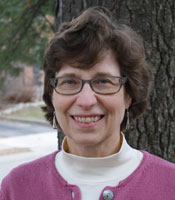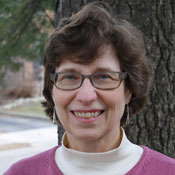Resource Description:
LISA C. YOUNG, Lecturer IV, Department of Anthropology, College of Literature, Science, and the Arts created a learning oportunity that combined physical and vertual research of a U-M botanical collection.
Original Publication Year:
2015
Resource Title:
TIP Winner: Re-Connecting Hopi Seeds: Creating Virtual Dialogues With a Source Community
thumbnail:
Course Type:
All
Academic Area:
Science, Technology, and Math
Discipline:
Department of Anthropology
Faculty Name:
Lisa C. Young
Related Links:

Students in the fall 2014 Museum Anthropology course (ANTHRARC 497) enjoyed a unique learning opportunity that thoughtfully integrated physical and virtual research. Specifically, student teams created a digital archive of a U-M museum botanical collection gathered from the Hopi reservation in 1935 and then interviewed (via videoconferencing) contemporary Hopi farmers. Blogging about their progress helped students share their experiences, while also documenting and reflecting on the project.
In this video recorded in March 2015 at the Provost's Seminar on Teaching, Unscripted: Engaged Learning Experiences for U-M Students, Lisa Young discusses the Hopi ethnobotanical collections at U-M.
Student Comments
“We all felt more invested in the project after making that human connection that is so often lost amongst objects and labels.”
“Informed by the voices of the Hopi community, each plant in our archive has transformed from ‘just another bean’ into something much more–a child of the Hopi community.”
“We gained an understanding of how museums and native communities negotiate matters of knowledge and power.”
“We were able to interview and discuss the seeds and farming traditions with Hopi farmers through the use of a webcam.”
“The classroom transformed into a lab, a meeting, and a welcoming place allowing students to engage
with and discuss the difficult history regarding Native American anthropological work and display.”
[The course] “allowed me to experience the work of an anthropologist while also teaching me the importance of natives’ voice and inspiring me to rethink the museum’s place in the world.”
Above photo:
LISA C. YOUNG (Department of Anthropology College of Literature, Science, and the Arts)





